Quick disclaimer: if this story seems familiar to you, you’re not crazy; I first wrote a version of it here. I decided to edit it as part of my Master’s course. Both the words and the story have changed (or, one might argue, grown), so I hope you’ll give it a read.
I watched as the body was engulfed in flames. I couldn’t tell if it was male or female; a white sheet tightly shrouded the corpse. The pyres could be seen from even the heart of the city, little dots of fire and smoke smoldering in the distance, like matches just about to be blown out. Later, when I’d leave the banks of the Ganges, I’d find bits of ash on my skin and in my hair, gray wisps of a life that was.
It was March in Varanasi, and I had arrived as part of a three-week tour around India. I hesitated signing up for it all those months ago, when I was still mapping the route I’d take through Southeast and South Asia, an eight-month adventure that I’d thought of for years. I had never taken a tour of any kind, and I envisioned a bus full of khaki-wearing, sunburnt tourists, the kind who refused to eat street food or use a public toilet. As a solo traveller, I finally decided it would be easier and safer to travel with a group, even if it meant our days were sometimes planned down to the hour.
And, despite my fears, the tour had exceeded my expectations, had taken me on a journey through India with a group of likeminded and open-minded people. Together we had camped in the Thar desert, explored the markets of Jaisalmer, climbed mountains in Pushkar, posed in front of Agra’s Taj Mahal, and now, finally, we had ended in Varanasi.
I had dreamt of Varanasi, painted it stroke by stroke a thousand times in my head. What greeted us was even bigger and more colourful than I could have imagined, a city of chaos and solemnity, of cacophony and serenity. I was thrown into it, another moving creature in a sea of tuk-tuks, saris, sadhus, cows, beggars, shopkeepers; all that action and noise eventually made its way to the ghats, the steps that led to the notoriously polluted Ganges. There, a hush fell over everyone and everything, the river a place for prayer. A strangely sweet smell permeated Varanasi, a mixture of cardamom, cow manure, and wood smoke – the same wood, of course, that burned the bodies of those who came here in their final days. This was done to purify the body, each pyre started with the flame of the Shiva fire, a flame that hadn’t gone out for over 3000 years. Not everyone was cremated – sadhus (holy men), pregnant women, and those who died of snakebite were dropped directly into the river, stone slabs sinking them deep beneath the sewage and debris.
This place was sacred. Hindus and Jains came here to die, the Ganges serving as the divine cosmic road to salvation. Swarms of tourists came here, too, boats full of them floating down the river day and night. In the early morning’s tranquility, there were few sounds: the trills of birds overhead, the sound of the water lapping against the ghats, and the focusing and refocusing of cameras as they captured some of the most private moments of life and death.
Each morning Indian men and women bathed in the river, washed their faces in the river, drank from the river, all in an attempt to atone for their sins, of this life and the last. I had heard of one English backpacker who attempted the same, dunked his body underwater for no more than a few seconds; he ended up in hospital. I cringed at his misfortune, we all did, those of his same blood – foreign blood. Blood that couldn’t handle the Ganges, its germs and its disease, its power and its magic. Later I’d balk when a sadhu tried to sell me tea made from its water, despite his reassurances that it was boiled and pure. “It will make you close to India,” he told me, but still I refused.
Paul Theroux once said, “Tourists don’t know where they’ve been, travellers don’t know where they’re going.” I struggled with this notion, these dichotomies: oblivious versus sensitive, the cost of a cheap souvenir versus the value of a life experience, one who sticks out versus one who blends in. I had felt both, not just in India but in every other place I’d been, desire to tick off the must-sees and yet desire to immerse myself as much as possible into the local culture. I felt caught between the two definitions.
The days in Varanasi were flexible, with many free hours in the afternoons to wander. On the first day, I encountered a woman selling trinkets out of a suitcase: incense, beedis, bindis, rings. Rifling through her wares, she showed me old photographs, draped me in necklaces, insisted I take kohl to line my eyes. Her older daughter brought us chai, and we sat together on the rough steps of the ghats, drinking out of tiny plastic cups. She told me about India, I told her about Canada. She had come to Varanasi from the countryside to try to find more work. At the end of our conversation I bought a necklace from her, a cheap thing that would stain my neck green. Her name was Priya.
The next day, I saw her again. This time, I purchased a few rings to send home to friends, and a necklace of skulls made of camel bone. As Priya and I talked, her younger daughter took my hands in hers and painted them, swirls of brown henna that dried in the sun. I learned little of the girls; while they wanted to touch my skin and braid my hair, they shied away from my questions. Other travellers occasionally joined us, or bought things, and I took a strange pride in every sale she made. I was never sure how Priya viewed me: was I simply a tourist, or was I her friend? Still, I preferred to sit with her on the ghats than sit at an overpriced café, and I enjoyed our conversations.
After making my way back to the hotel through the maze of streets, I realized I was still wearing a bracelet I had tried on but not paid for while sitting with Priya. I didn’t think much of it then; she had given me small gifts already, and I would see her tomorrow, my last day. I spent that night on a boat with my tour, led to a spot on the river where we could see the nightly Agni Pooja, the Worship to Fire. It was a ceremony held each night by priests, and despite the young boys hopping from boat to boat selling chai and the flashes of cameras, I was captivated by the ceremony, by the bells and the horns, the calls to Shiva, the smoke of incense wafting up into the black sky.
Morning came, and I walked to the ghats as usual. Priya wasn’t there, nor were her daughters. Another woman with another suitcase sat in her place. When I asked about Priya and her daughters, she shrugged. The bracelet throbbed at my wrist, and with a dry throat I swallowed my goodbyes one by one.
I left Varanasi the next day, and India soon after, each of us on the tour hugging tightly and promising to keep in touch.
***
Months later I’d hear another backpacker quote Theroux. He was telling me about his time in India, his long hair just as scraggly as the bracelets lining his arms; we could have been twins. He claimed to be travelling without a camera.
“It’s all in here,” he said, tapping his head.
“I took over three thousand photos in India in just under a month.”
He snorted into his Chang beer. “A month? That’s it? You can’t see India in a month.”
“Well, I saw what I could, and I had an incredible time.” I was sounding defensive. We took a swig in tandem, the conversation starting to lull.
“You ever hear that quotation by Paul Theroux?”
Please no, I thought. Please no. Not this again, that same quotation that people all over the world use to make themselves feel different, to justify their holidays, to shake off some of the neocolonialist shame we seem to have accrued over the past few decades. Because by very definition, and at the very basic core, a traveller and a tourist are the same: a person who travels. A person who wants to experience something different and see something new. A person who, for whatever reason, wants to get up off of the couch and step into a foreign land.
I finished his sentence. “…travellers don’t know where they’re going.”
“So what are you, then?” He flicked the corner of my well-worn guidebook that sat on the table between us, grinning.
“Both, I suppose.” I played with the bracelet from Varanasi. “Both.”
***
The bracelet I had taken from Priya stayed on my wrist for months, its cheap plastic parts sustaining the wear and tear of a life on the road. It snapped one afternoon in a hostel room in Cambodia, beads rolling on the floor, and I kept as many of them as I could find. It felt like a loss, but of what, I didn’t know.
The bracelet from Priya is the second one on my wrist

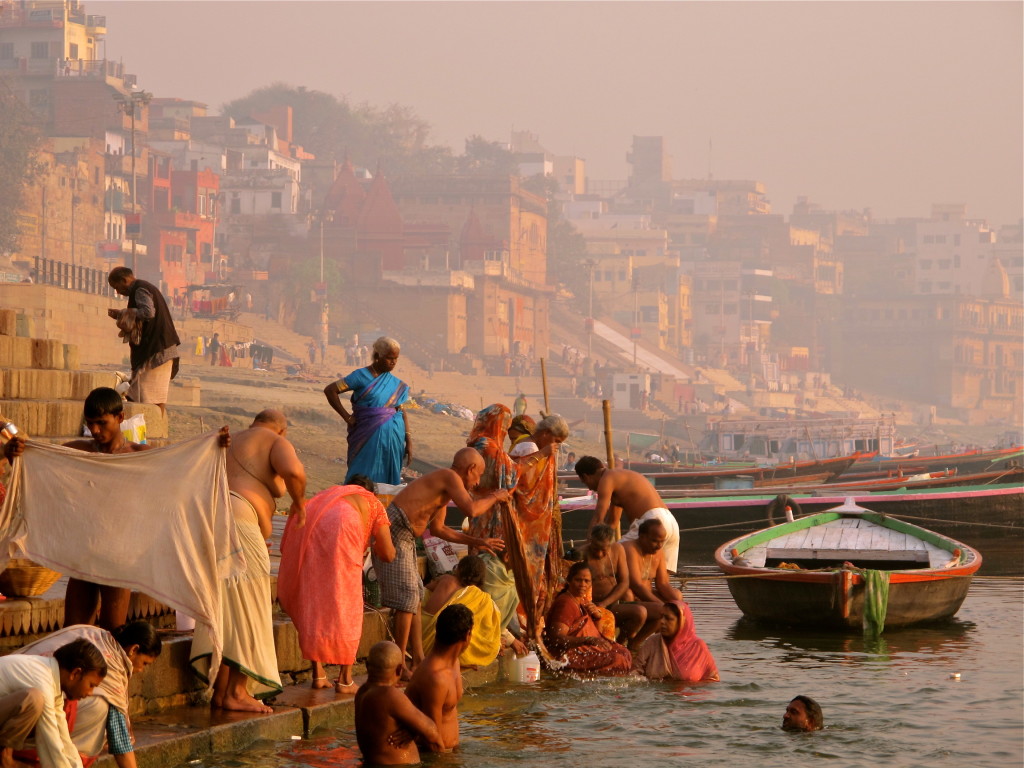
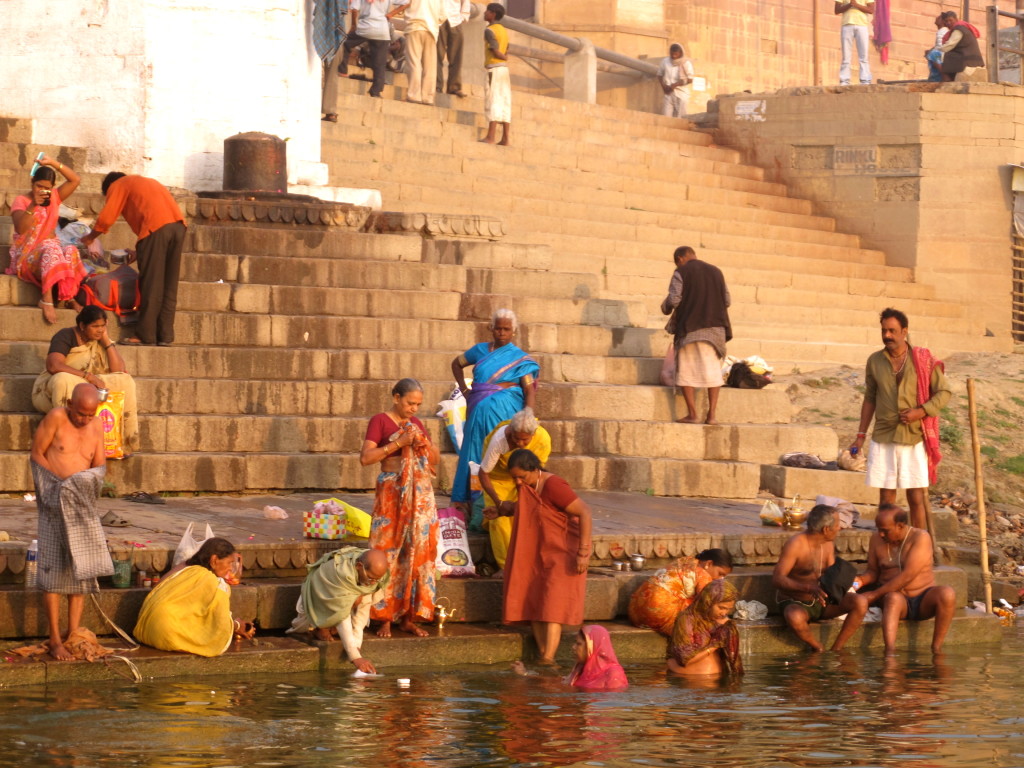
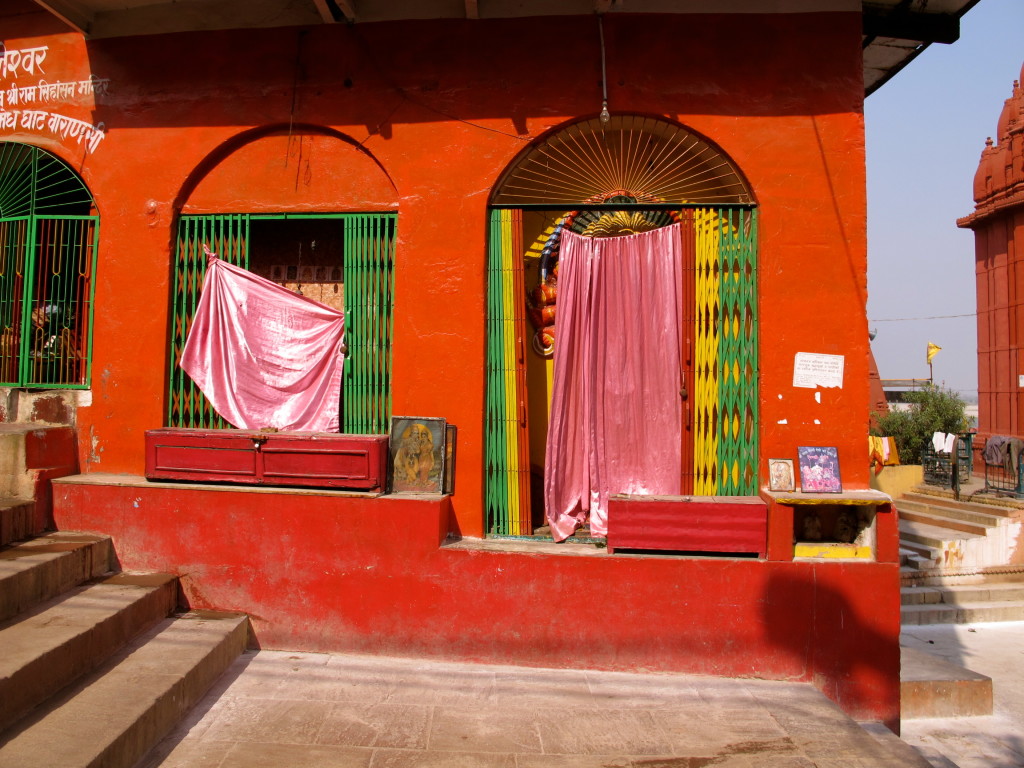
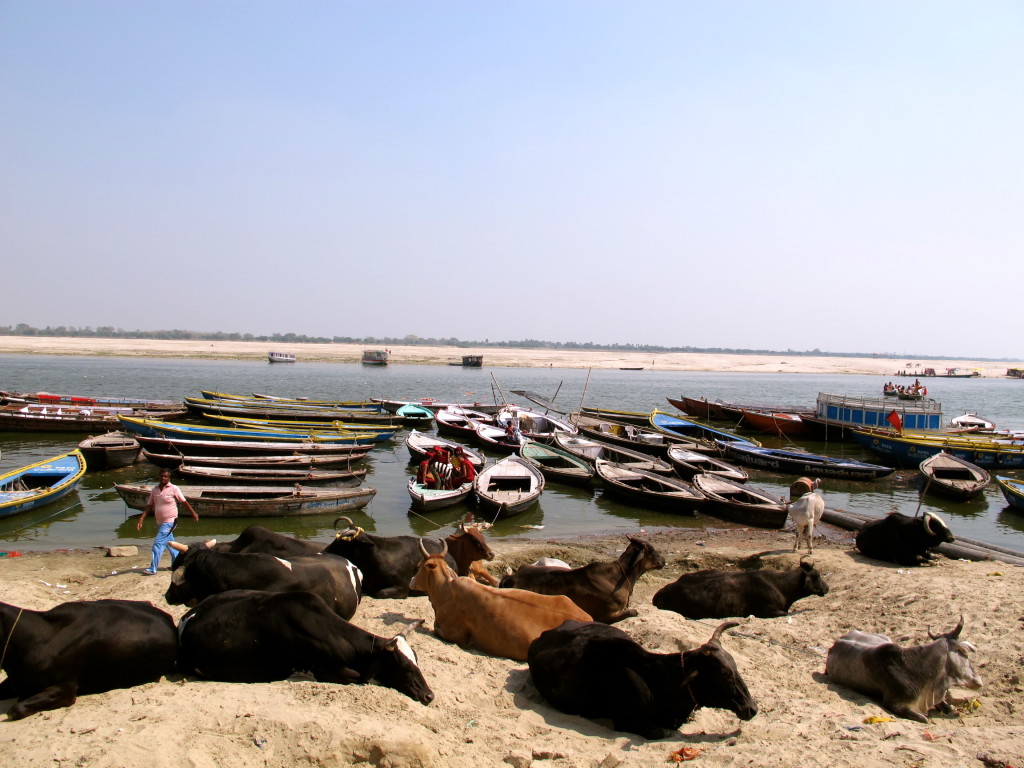
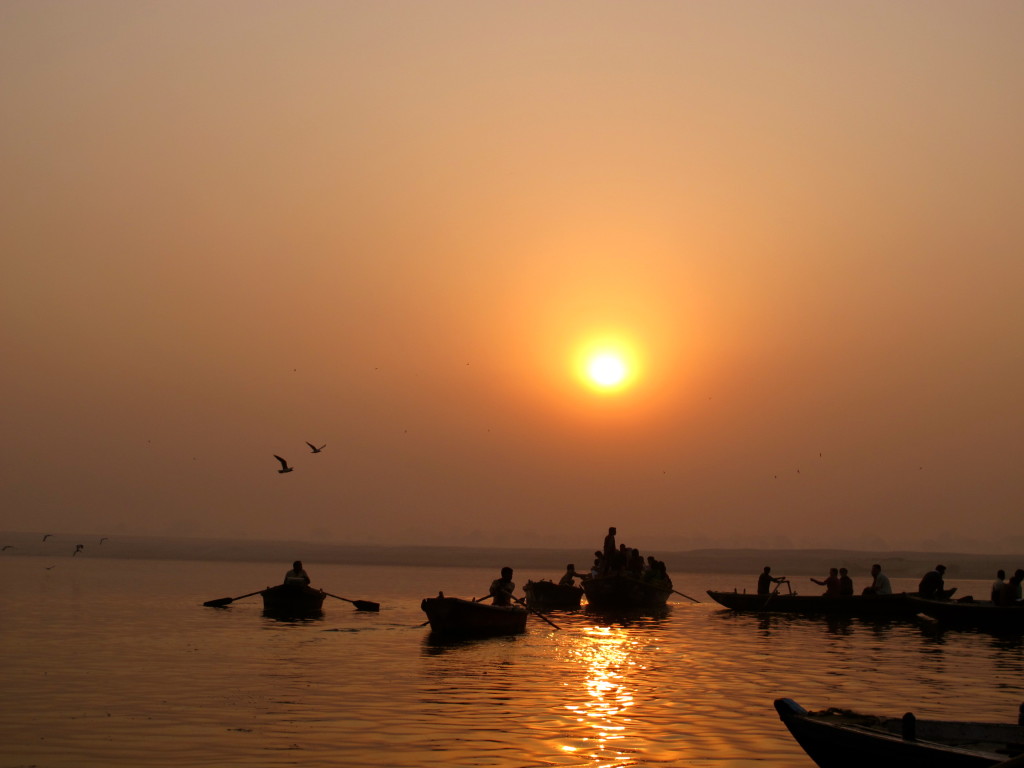
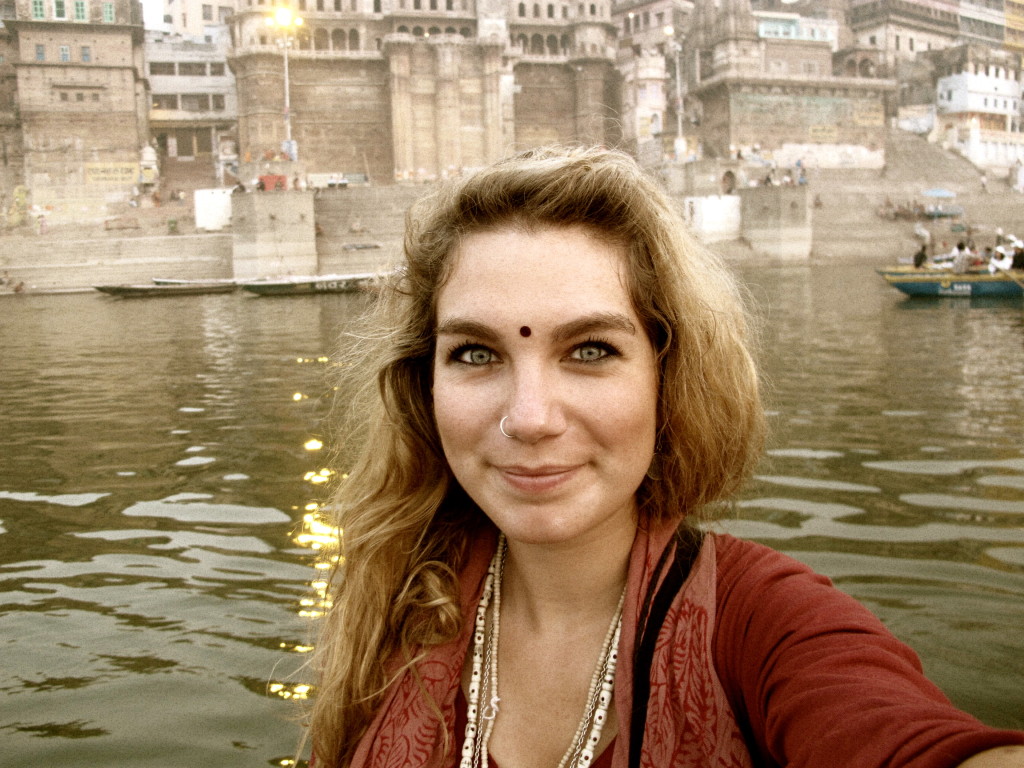


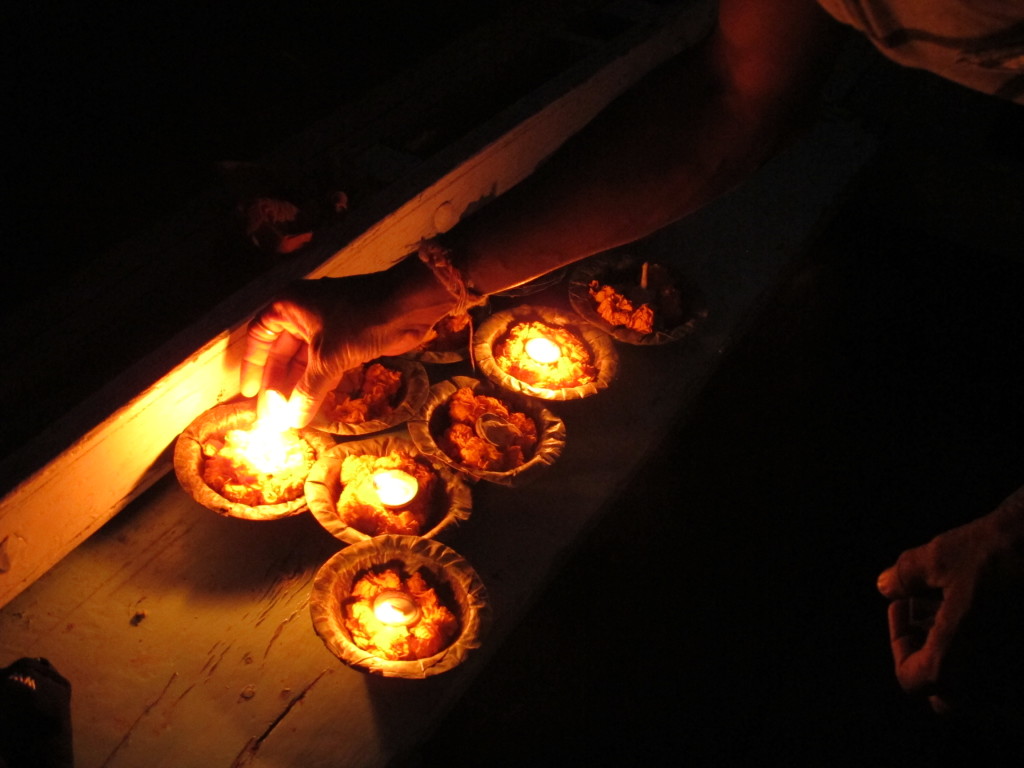



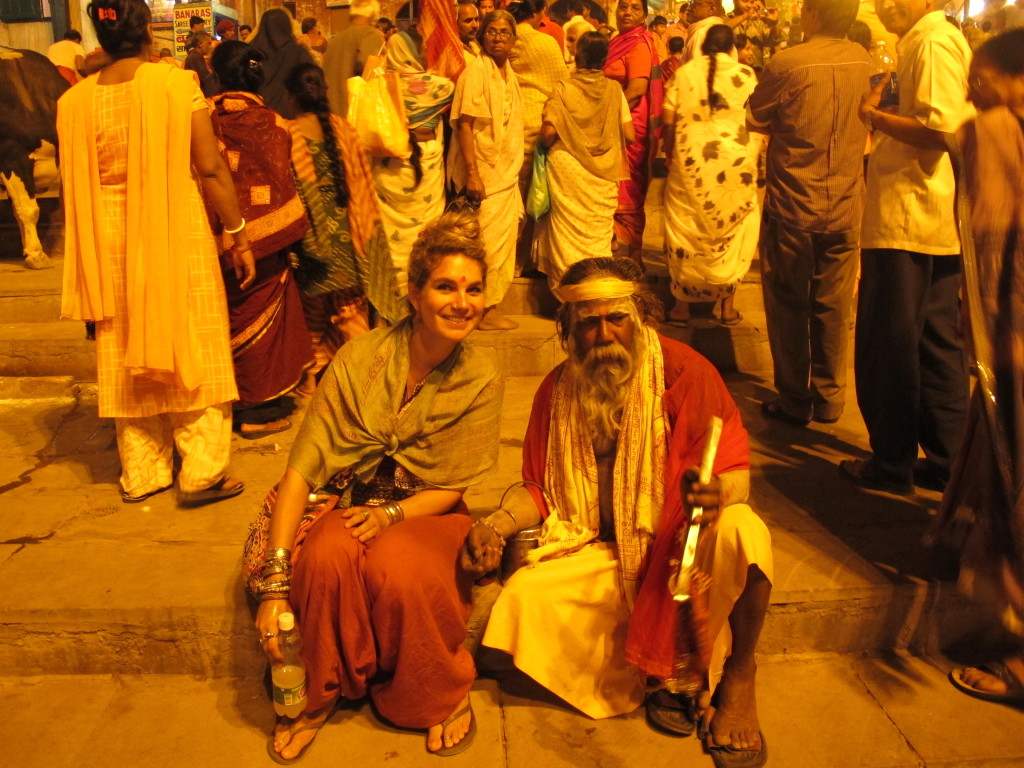
30 comments
I loved this the first time, and I was so happy to read it again today.
Thank you so much, Lauren!
This was a wonderful edit Brenna! It is so detailed and only makes me want to go to India even more!
Aw, thank you Laura!
I adore your descriptions of Varanasi – you really bring it to life and I can feel how much you loved it. As for people that say douchy comments like that, it never ends. They are everywhere but your answer is spot on. One and the same, just some of us maybe like to explore differently to others.
Thank you so much, Becki – I’m really glad that you liked it! And yes, it never ends. I agree with you – we all travel differently, and I think that as long as we are all as morally and environmentally responsible as we can be, we really shouldn’t judge each other.
I adored this piece the first time and like it even more the second time. Varanasi is such a special place and you’ve been able to capture that through your words.
As for douchey comments, why can’t we just all live and let live (obviously so long as we’re all moral and respectful as you point out above).
Thank you so much, Sue!
A beautiful revisit to a story that deserves a second read! You hear it a lot … I know … but you make these words shine off the page.
Thank you, Kerri – that really means so much to me.
Beautiful writing, Brenna. And beautiful photographs as well 🙂 You have reignited my lust for India.
Thank you so much, Katie! I hope you get to visit (again?) soon.
Unfortunately (or fortunately? Nothing like the first time I imagine 😉 ) it will be my first visit to India when I go. It had been a top destination for me and somehow never happened. It must happen soon!
Oh wow, I’m sure you’ll love it!
I love this story( both times)! It makes me want to go back to that beautiful and spiritual place.
Aw, thank you so much, Zalie. I remember hearing your stories about it before I had a chance to visit!
I love this version of the story, thanks for sharing; the descriptions are just as beautiful as the pictures and make me long to visit India. I also wonder about the distinction between ‘tourists’ and ‘travellers’ as I journey around Asia; really I think we’re all a mixture of both and neither ‘type’ is better or worse than the other as long as you travel with an open-mind and are always willing to learn.
Definitely – I totally agree with that, Amy. Thank you so much for your comment, I’m glad that you liked the story!
I absolutely love your writing style. Your descriptions of India are so vivid and reading your posts leave me with a smile. A beautiful piece.
Wow, thank you so much! I really appreciate that. I’m so happy you enjoyed it.
“I had dreamt of Varanasi, painted it stroke by stroke a thousand times in my head.” Gurrrrl, you are too good. The writing in this post is a-ma-zing.
The traveller-versus-tourist thing. Hmm. I’d consider myself both. Like you, I love to tick off the big sites that I’ve always dreamed of seeing. But I’m also averse to coach loads of travellers elbowing people with disregard, and restaurants with jacked-up prices.
The guy who quoted Paul Theroux sounds like a douche, to be honest. I think a lot of people who consider themselves ‘travellers’ don’t realise people do have time limitations and other commitments. Unless he spent a lifetime in India, I doubt he really saw it, either.
Wow, thanks so much, Tom. I’m so happy you enjoyed it.
I totally agree with your statement – I think I fall somewhere in the middle of those stereotypical definitions. As I said, I don’t know if one can even be distinguished from the other, at least on the surface. And YES to your final comment; I often only have a limited amount of time and money to see a place, and can’t always devote months and months (or sometimes even days and days). Hell, I only spent a day (and barely a full one at that) in Liechtenstein on Friday. I travel at the speed I can.
[…] Check out some more unavoidable truths of travel: You Will Discover Wanderlust, You Will Question Your Role as Traveller […]
Thank you for sharing your story about Priya. It’s those connections that make up the core of what it means to be a traveler.
I’ve really enjoyed reading your blog! I’m currently preparing for a trip to India and I’m considering taking a tour for at least the first bit, what tour company did you go with?
Thanks
I went with G Adventures – they do some pretty good tours. I’d also recommend Intrepid. Hope you have an amazing time!
[…] The Last Time I Saw You series is a collection of poignant snapshots of travel romances, while You Will Question Your Role as Traveller conjures up the sights, smells, tastes and feelings of Varanasi in […]
Wow, what a beautiful post. Something a lot of us travellers struggle with, that balance between playing voyeur and being of value to a foreign community be it by trade or just by sharing a conversation and swapping stories. Before I left for Asia a family member asked me ‘Yes, but what will you do there… how will you be of service there’? And it has always stuck with me, that conflict of, is it okay to travel and not be of service, but just to be?
Hi Brenna
I will be in India in 2 weeks’ time and I’m thrilled to have found your blog. I too have this very colorful image in my head of the places I will be visiting – especially Varanasi. However, no matter how many pictures, blogs and Youtube vlogs I’ve watched, I know that my senses are still far, far from being prepared for the reality which awaits. I am filled with great excitement and as a solo female traveller / tourist LOL I also have a certain twinge of trepidation. It is India after all; the India that non-travellers believe a single female should never, ever visit! Well, here I go on another exciting adventure and I just know that this gypsy girl is going to fall in love with India.
Thank you for the pointers and by the way – I just looove what you wear!
Hi Brenna,
This is my first time leaving a comment on a blog post but this was so beautifully written that I can’t help myself! I’ve never really considered India as a travel destination but reading this made me feel like I was right beside you breathing in the wood smoke and cardamom whilst quietly sitting on the ghats. Beautiful imagery.
I don’t think the guy who mentioned the Theroux quote really thought hard about it because, to me, it speaks more about the quality of being present. Maybe the tourist and the traveller are one and the same: people who are happy to exist exactly where they are at that point in time.
I’ll keep this short to stop myself from rambling but I want to thank you for all the posts and for sharing your life with us! I’ve been considering blogging about my travels and this post has convinced me to really give it a go — if I can display even half of your authenticity, it will have all been worth it!